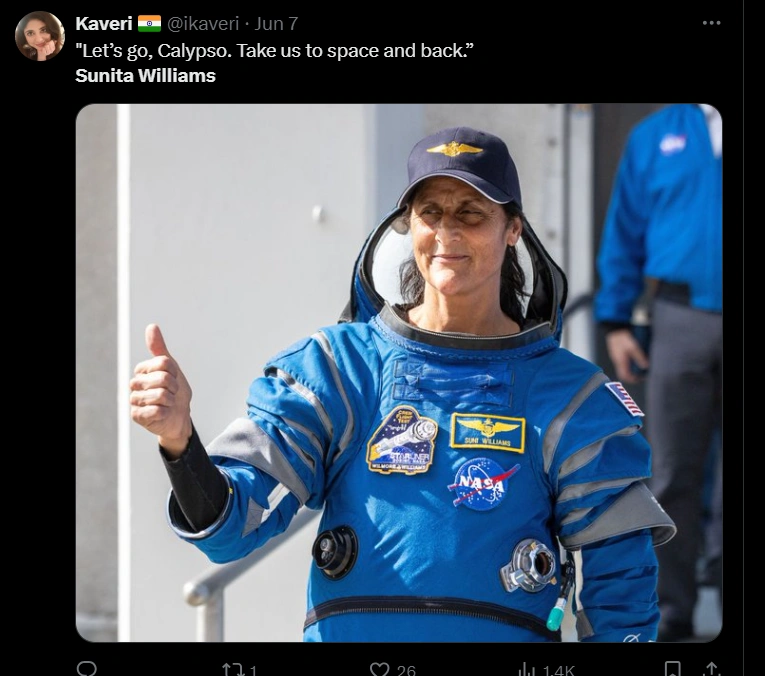
Introduction
Sunita Williams, Boeing Starliner: Human exploration remains an enduring quest in the vast expanse of space, where celestial bodies dance in cosmic choreography.
Read The Shitz: World Environment Day 2024: Restoring Our Land for a Sustainable Future
One such pioneer is Sunita Williams, an Indian-American NASA astronaut who has etched her name among the stars. In this blog post, we delve into her historic journey aboard the Boeing Starliner, exploring its significance and weaving in related topics.
Table of Contents
Sunita Williams: A Trailblazer
The Starliner Mission
On May 6, 2024, Sunita “Suni” Williams embarked on her third space mission aboard the Boeing Starliner. Alongside fellow astronaut Barry “Butch” Wilmore, she became the first person to fly aboard this spacecraft, marking a pivotal moment in space exploration. The Starliner capsule, designed to ferry astronauts to the International Space Station (ISS), carried the hopes of scientific progress and human curiosity.
#Indian origin #NASAastronaut Sunita Williams made history with her maiden journey on #BoeingStarliner, safely arrived @space_station today at 1:15 am IST.
— Narottam Sahoo (@narottamsahoo) June 7, 2024
Hear the #ISS crew's heartfelt welcome to #Starliner Crew Pilot @Astro_Suni and Flight Test commander #ButchWilmore.
The… pic.twitter.com/AwVKIKpWMh
Cultural Connections in Space
Sunita Williams, with her Indian heritage, brought more than scientific instruments to the cosmos. She carried samosas, sacred texts like the Upanishads and the Bhagavad Gita, and even Ganesh, the elephant-headed Hindu god, symbolizing her cultural roots. In doing so, she bridged worlds—celestial and earthly—reminding us that exploration transcends borders and embraces diversity.
The Significance of Starliner
A Maiden Voyage
The Starliner’s mission was no ordinary flight. It represented a culmination of years of research, design, and collaboration between NASA and Boeing. Williams, incidentally involved in shaping the spacecraft, tested its capabilities during this historic maiden voyage. Her presence validated its readiness for future crewed missions, paving the way for routine flights to the ISS.
Challenges and Triumphs
The journey wasn’t without challenges. Delays plagued previous attempts, but perseverance prevailed. Williams exemplified resilience and adaptability with her 322 cumulative days in space and seven spacewalks. Her record-breaking spacewalk time, though later surpassed, remains a testament to human endurance and scientific exploration.
Beyond Starliner: Exploring New Horizons
Space Tourism and Commercial Ventures
The success of the Starliner mission opens doors to space tourism and commercial ventures. Imagine a future where private citizens embark on celestial vacations, gazing at Earth from orbit. Companies like SpaceX and Blue Origin are already pioneering this frontier, and Williams’ voyage contributes to this transformative shift.
Collaborations and Global Unity
Williams’ journey transcends national boundaries. As nations collaborate on ISS projects, they foster unity beyond terrestrial disputes. The cosmos becomes a shared canvas for scientific inquiry, where astronauts from diverse backgrounds work together, bound by curiosity and a desire to unravel the universe’s mysteries.
Conclusion
Sunita Williams’ voyage aboard the Boeing Starliner echoes humanity’s eternal quest—to explore, learn, and connect. As we gaze skyward, let her story inspire us to reach for the stars, not merely as scientists or engineers, but as dreamers and stewards of our cosmic home.
FAQs
What is the Boeing Starliner?
The Boeing Starliner is a crewed spacecraft designed to transport astronauts to and from the International Space Station (ISS). It’s part of NASA’s Commercial Crew Program, aiming to provide safe and reliable access to space.
Who is Sunita Williams?
Sunita “Suni” Williams is an Indian-American NASA astronaut with an impressive spacefaring record. She has completed two long-duration missions aboard the ISS and is now part of the historic crewed flight test aboard the Starliner.
When did Sunita Williams launch on the Starliner?
On June 5, 2024, Sunita Williams, along with fellow astronaut Butch Wilmore, lifted off aboard the Starliner from Cape Canaveral Space Force Station in Florida.
What’s the significance of this mission?
This mission validates the Starliner system, including the spacecraft, launch pad, and rocket. It’s a crucial step toward certifying the Starliner for regular crewed missions to the ISS.
How long is the flight to the ISS?
The Starliner’s journey to the ISS takes approximately 25 hours.
What cultural items did Sunita Williams take to space?
Sunita carried samosas, sacred texts like the Upanishads the Bhagavad Gita, and even Ganesh, symbolizing her Indian heritage and bridging cultural worlds.
What challenges did the crew face during the mission?
Despite some issues en route, the crew successfully docked the Starliner to the ISS, demonstrating their resilience and adaptability.
What’s the future of space tourism?
The success of the Starliner mission opens doors to commercial space travel, where private citizens can embark on celestial vacations.
How does collaboration on the ISS foster global unity?
As astronauts from diverse backgrounds work together on ISS projects, they transcend national boundaries, emphasizing shared curiosity and scientific inquiry.
What’s next for Sunita Williams and the Starliner?
Sunita’s journey inspires us to reach for the stars, not just as scientists but as dreamers and stewards of our cosmic home










